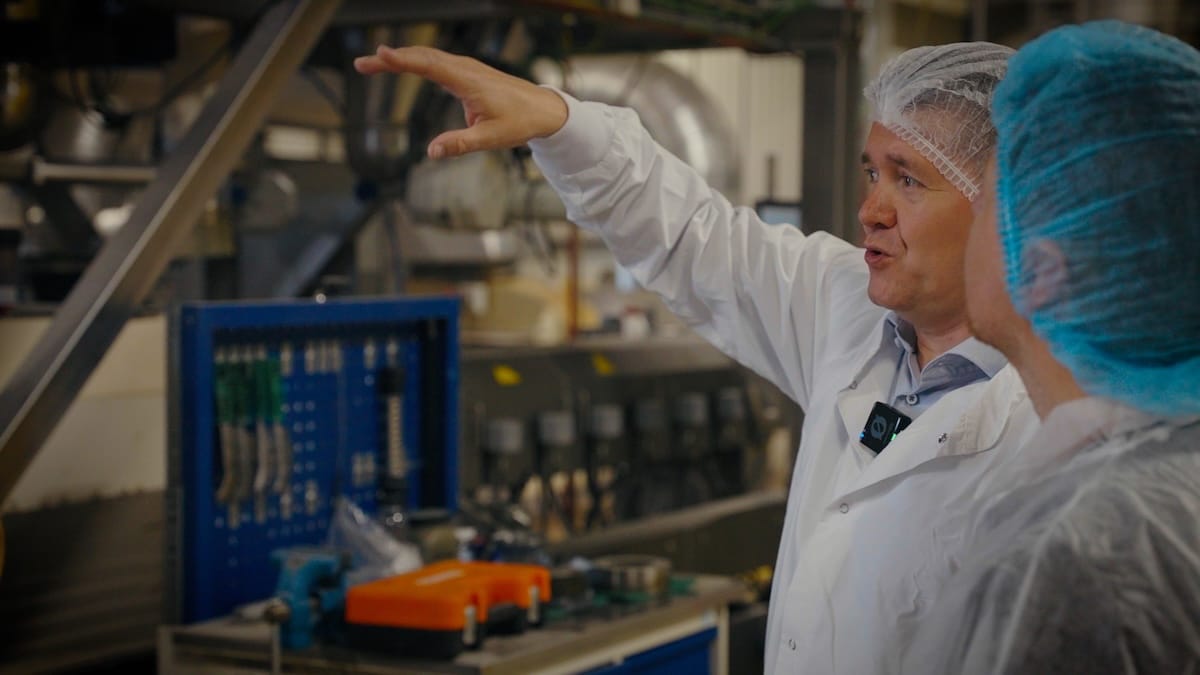Crispy Food: From daily disruptions to data-driven stability

If you find yourself strolling into a Crispy Food plant, you will see lines producing cereals and toppings that end up on breakfast tables across Europe. As Denmark's largest producer of breakfast cereals, they supply some of the biggest names in the food industry from three sites: Nakskov and Gørlev in Denmark, and Rybnik in Poland.
Crispy Food is not only a national leader but also a significant European player, producing both at scale and across borders. Their success depends on meeting strict standards of quality, reliability, and efficiency. And like so many food manufacturers, they operate in an industry where margins are thin, competition is fierce, and customers expect consistency every single day.
For Crispy Food, the challenges were clear. Constant disturbances and instability had simply become a part of their operations, and collecting production data manually with pen, paper, and Excel left them without true visibility or the insights needed to improve.

Reliable data creates reliable decisions
COO Lars Sørensen explains it simply: “We need to have stability. We have disturbances on a daily basis, and the way out of this instability is data.”
It’s a statement that touches on a universal truth. In modern manufacturing, competitiveness has become dependent on predictability. Without it, production cannot be planned efficiently, costs cannot be controlled, and customer commitments cannot be met consistently.
Before Factbird, Crispy Food struggled to get anything useful out of their unreliable data. Disturbances could strike at any time; operators were often forced to rely on gut feel or incomplete records when diagnosing and solving problems.
The practice of manual reporting only made matters worse. Notes on clipboards and in Excel spreadsheets might capture parts of the story, but they could never provide the credible, real-time insights required to stay ahead. Without seeing the full picture, and in detail, it was impossible to anticipate breakdowns, benchmark performance between sites, or prevent recurring issues.
The lack of predictability is not something that’s unique to Crispy Food. It is a universal pain point for manufacturers managing multiple countries and facilities. How do you ensure every site speaks the same language? How can we reliably compare data within and across sites? How do you build a system you can actually trust?
Transformation, execution, reflection
To get closer to the solution, we visited both Crispy Food’s Polish facilities and their site in Denmark, where we sat down with COO Lars Sørensen, Technical operation manager Conrad Pedersen, and Plant Manager Mariusz Wagner.
They described how Factbird became a turning point for them. Instead of relying on fragmented and inconsistent reports, the production lines now feed live data directly into a system that everyone in the organization can access, understand, and trust. Operators who previously struggled with unintuitive IT systems also found Factbird to be easy to adopt, faster to use, and more dependable.
For Lars, the difference is clear in the level of detail in reports and insights. “Partly it is creating overview in the reporting part and where we can see we have pain points. Then you are logging into the portal, you are looking into the live feed, and you are digging in.”
That ability to zoom in on specific pain points is what also makes it possible to zoom out.
Managing a single plant is challenging enough, but when you operate three sites in two countries, the complexity multiplies. Without access to trustworthy and real-time production data, comparisons become pointless, and best practices remain isolated at individual facilities. By introducing Factbird, Crispy Food gained real-time visibility into production, production data granularity, and the structural connection needed to benchmark across borders.

A fact-based process becomes progress
With Factbird up and running, Crispy Food has moved away from instability and toward precious predictability.
- Credible, real-time data has replaced manual reporting and now provides teams with a shared source of truth.
- Stability in operations means fewer surprises and stronger performance against the competition.
- Preventive maintenance is unlocked, leading to shortened downtime and improved cost efficiency.
- Connected and standardized operations ensure that, whether in Denmark or Poland, every site works with the same facts and measures progress in the same way.
For Mariusz in Rybnik, the shift has been felt directly on the shop floor. Accessing live production data gives his team the clarity to move faster, and they’re now addressing issues more quickly and reducing disturbances.
The cultural effect is just as important. By leaving the inconsistent reporting behind, teams no longer spend time questioning whether the data they’re working with is accurate. Instead, they can focus on the things that actually move the production needle. And when every site measures performance the same way, improvements don’t stay isolated. They become the benchmark for everyone.
From uncertainty to understanding
Crispy Food’s story should sound familiar to anyone in manufacturing. Like so many others, they wanted to take control of their data to improve operations. The challenges of daily disturbances, unreliable reporting, and the complexity of managing multiple sites are the same as manufacturers everywhere continue to face.
With Factbird, they’re turning risky instability into predictability. They can act earlier, compete with greater confidence, and make sure teams across borders are on the same page.
As Lars puts it, “The way into predictability, the way out of instability, is data.”

.svg)